Reviews
Agnès Varda
France, 1985
Credits
Review by Timothy Sun
Posted on 03 August 2010
Source Criterion DVD
Categories Viva Varda: The Films of Agnès Varda
“Would you give this girl a ride?” the promotional campaign for Agnès Varda’s Vagabond asked its potential audience on its initial release. The girl in question is a young, dirty, stinking, aimless, ungrateful drifter — someone we would casually dismiss as a “homeless person.” Where did she come from, where is she going, what is she rebelling against? Nowhere, anywhere, nothing, anything. Her name is Mona and she is dead. She begins the film frozen to death in a ditch, a penniless Citizen Kane with not even the memory of a sled to carry her last icy breath. Varda mercilessly holds on the twisted dead body, forcing us to look. Cut from a wide shot to a medium close-up, on the face of the dead girl. Look. Would you have given her a ride?
This is question the viewer of Vagabond constantly asks himself, as do, in their own way, the characters who populate the story. Like Citizen Kane, Vagabond is a film about an enigma, whose life is filled in piecemeal by those who knew her. Like Welles, Varda structures her film around the recollections of witnesses, whose direct-address statements about Mona reveal more about the speakers than about their subject. One girl yearns for the kind of freedom Mona enjoys; a mechanic accuses her and all female vagrants of being “man chasers”; a kindly Tunisian farm laborer approaches a kind of love toward her. And so it is with the viewer, who cannot fail to be moved by Mona’s plight but who can also harbor a torrent of mixed emotions about her. As one bourgeois character says, “She frightens me because she revolts me.” Yes, but when she laughs, particularly with a sweet old granny in a parlor, it’s the laugh of an innocent, and you think, how could I not give her a ride?
Like many of Varda’s films, Vagabond is an almost indistinguishable blend of fiction and documentary, though, uncharacteristically, the film is nearly devoid of the playfulness that is such a part of her personality (her documentary The Gleaners and I explores a similar topic, but with much more of the trademark Varda joy). This is a hard film. The opening shot looks post-apocalyptic, a barren field with only splotches of green. The twelve tracking shots interspersed throughout the film showing Mona walking in solitude, always from right to left across the screen (as opposed to the “forward” trajectory of left to right), position her against rural and industrial wastelands: desolate fields, abandoned machinery, tangled branches. Curiously, the tracking shots do not strictly follow Mona; they often begin and end with her offscreen, catching her walking for only a portion of the shot. The inexorable momentum of these shots, their repetitiveness, emphasizes Mona’s continuous movement; the interludes where she meets other people or does a few odd jobs are merely interruptions on her journey toward oblivion. Hers is an utterly solitary existence, her lone companion the blighted landscape that frames her wanderings.
The bits and pieces we gather about Mona’s pre-nomadic life show that she has not accidentally fallen into this kind of existence, as we normally assume about homeless people. No, she had gone to school and was employed, but “hated [her] bosses” and quit. When a well-to-do professor gives her a ride and brings her food and champagne, Mona is asked why she decided to drop out of the world: “Champagne on the road is better,” she says. But champagne respites are rare — as the film progresses, Mona’s struggles intensify. An earlier boast that she can “always get bread” proves false; freedom and independence turn to terror; the girl who’s described almost mythically emerging “from the sea” ends, in a cruel elemental irony, mired in filth and dirt.
Much is made of how dirty Mona is: her appearance is her first and most immediate affront to polite society. There is a great scene in a café with Mona and the professor sitting across from each other. Varda cuts to a close-up of their hands on the table, the professor’s perfectly manicured and painted, Mona’s rough and blackened. This is the essential difference between the two characters, Varda suggests — and neither would have it any other way.
Before we fall into the expected outrage against inequality and the like, it’s worth remembering that Mona, at least at this point, rather enjoys her outcast status. When Mona is presented with opportunities to give up the road and settle down to work, she refuses. A shepherding couple take her in and give her a small plot to plant potatoes, but she leaves before lifting a finger. When she meets Assoun, the Tunisian laborer, she is supposed to help him trim vines, but Varda quickly cuts to a shot of Mona reclining in the field smoking a cigarette while Assoun is hard at work. Tue, Assoun is the only person Mona meets whom she does not leave voluntarily — his fellow farmhands do not want a woman staying with them and push her out — but, given what we know of Mona, it would only have been a matter of time before she left.
Herein lies the central paradox of the film: this is not the usual melodrama of an outcast rejected by society; here, the rejection is mutual. It would be too easy for Varda to condemn an unfeeling civilization for allowing this child to march toward death. What Varda accomplishes is much more complex and difficult to reconcile. “She frightens me because she revolts me” — it is the quiet miracle of this film that such a sentiment is as equally valid as the pity, envy, lust, regret, frustration, and love that other characters feel toward Mona. In the face of a thoroughly grotesque social ill — homelessness — as embodied by a mostly unpleasant protagonist, Varda remains totally non-judgmental. A humanist in the truest, deepest sense, Varda observes her subject with her documentarian’s lens not from on high but at eye-level, square in the face, and asks us to do the same. It is a crime that in today’s developed world homelessness is as pervasive as it is — in that we can all agree with Varda. But what exactly do we do about it? Moreover, what if the “victim” of this circumstance is not really a victim at all, but a willing, even enthusiastic participant? For that, Varda has no answers except that we look, empathize, and never judge. Would I give her a ride? I don’t know. Would you?
More Viva Varda: The Films of Agnès Varda
-
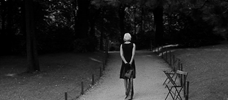
Cléo from 5 to 7
1962 -
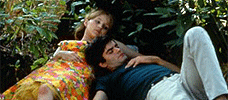
Le Bonheur
1964 -
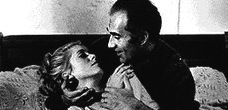
Les Créatures
1966 -
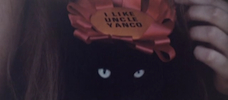
Uncle Yanco
1967 -

Black Panthers
1968 -

Lions Love
1969 -

One Sings, the Other Doesn’t
1977 -

Daguerréotypes
1976 -

Mur murs
1981 -

Vagabond
1985 -
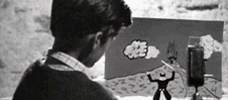
Jacquot de Nantes
1991 -

One Hundred and One Nights of Simon Cinéma
1995 -
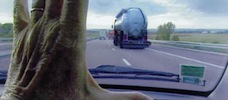
The Gleaners and I
2000 -

Cinévardaphoto
2004 -

The Beaches of Agnès
2008
We don’t do comments anymore, but you may contact us here or find us on Twitter or Facebook.



